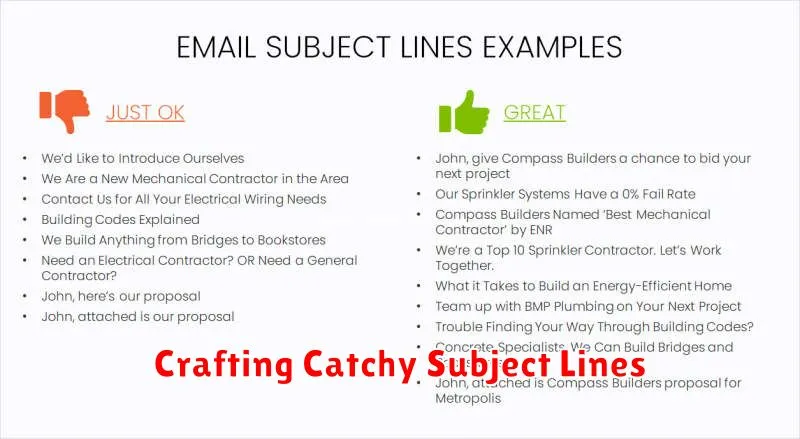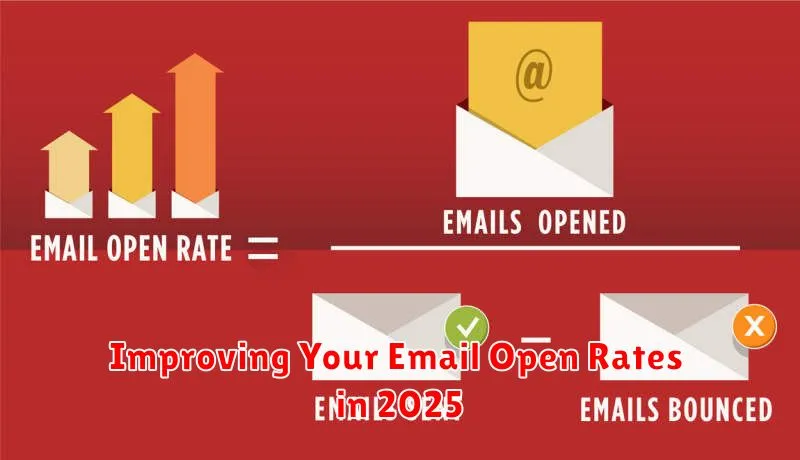In today’s digital landscape, email remains a critical component of any successful marketing strategy. However, with inboxes overflowing and user attention spans dwindling, achieving high email open rates has become increasingly challenging. Improving your email open rates is not just about vanity metrics; it’s about ensuring your message reaches your target audience and drives meaningful engagement. In 2025, staying ahead of the curve demands a strategic approach to email marketing. This article will provide actionable insights and proven techniques to help you optimize your email campaigns and boost your open rates, ultimately leading to improved conversions and ROI.
This comprehensive guide will delve into the key factors influencing email open rates in 2025. We’ll explore the importance of a clean email list, the impact of compelling subject lines, and the role of personalization in capturing your audience’s attention. We’ll also discuss the best practices for optimizing your sending time and frequency, as well as the significance of mobile optimization in ensuring your emails render correctly across all devices. By implementing the strategies outlined in this article, you’ll be well-equipped to improve your email open rates and maximize the effectiveness of your email marketing efforts in 2025.
Understanding Open Rate Benchmarks
Before diving into strategies to improve your email open rates, it’s crucial to understand what a “good” open rate actually is. Benchmarking against industry averages helps you gauge the effectiveness of your current email campaigns and identify areas for improvement. Keep in mind that these benchmarks are just that – benchmarks. Your specific open rates can vary based on several factors.
Industry plays a significant role. For example, highly competitive industries like retail or travel might see lower average open rates compared to niche B2B sectors. List quality is another critical factor. A highly engaged, segmented list will generally outperform a large, unsegmented list. The type of email also matters. A transactional email, such as an order confirmation, will typically have a much higher open rate than a marketing newsletter.
While specific numbers fluctuate, generally, an average open rate falls somewhere between 15% and 25%. Anything above this range is considered strong performance, while anything below suggests there’s room for improvement. Regularly monitoring your open rates and comparing them to relevant benchmarks provides valuable insights into your email marketing performance.
Crafting Catchy Subject Lines

Your subject line is the first, and often only, impression you make on a potential reader. A compelling subject line can significantly increase your email open rates. Conversely, a weak subject line can land your email directly in the trash folder.
Focus on creating subject lines that are concise, intriguing, and relevant to the email’s content. Avoid misleading or overly sensationalized language, as this can damage your credibility and lead to unsubscribes.
Key Elements of Effective Subject Lines:
- Urgency: Create a sense of urgency, without being pushy, to encourage recipients to open immediately. Example: “Limited-Time Offer: 20% Off Your Next Purchase”
- Curiosity: Pique the reader’s interest with a subject line that hints at valuable information inside. Example: “The Secret to Boosting Your Productivity”
- Personalization: Include the recipient’s name or other relevant details to make the email feel more personal. Example: “[Recipient Name], Your Exclusive Discount Awaits”
- Clarity: Clearly communicate the email’s purpose. Example: “Your Monthly Newsletter is Here”
Experiment with different subject line strategies and analyze your results to determine what resonates best with your audience.
Personalization Tactics
Personalization goes beyond simply inserting a recipient’s name. It’s about leveraging data to create emails that resonate with individual subscribers. This targeted approach can significantly improve your open rates by demonstrating relevance and value.
Consider these personalization tactics:
Segmented Lists
Divide your subscriber base into smaller groups based on demographics, purchase history, or engagement levels. This allows you to tailor content specifically to each segment’s interests.
Dynamic Content
Implement dynamic content that changes based on user data. For instance, showcase products based on past browsing activity or offer location-specific deals.
Personalized Recommendations
Provide personalized product or content recommendations. If you know a subscriber frequently purchases a specific item, suggest related products they might enjoy. This curated experience strengthens engagement.
Behavioral Triggers
Utilize behavioral triggers to send automated emails based on specific actions. For example, send a welcome email after signup or a cart abandonment reminder for unfinished purchases.
Best Days and Times to Send
Identifying the optimal send time for your emails is crucial for maximizing open rates. While general best practices exist, the most effective approach is to analyze your own audience data.
Historically, mid-week days like Tuesday, Wednesday, and Thursday have shown higher open rates. This trend suggests that people are more likely to engage with their inboxes during the peak of their work week.
Regarding time of day, the optimal sending window often falls within late morning (10 AM – 12 PM) or early afternoon (1 PM – 3 PM) in the recipient’s time zone. This timing aligns with typical work breaks or periods of lower workload, allowing recipients to dedicate more attention to their emails. However, consider industry specifics and audience behavior; for example, a B2B audience might be more active during standard business hours.
A/B testing is invaluable for determining the best days and times to send to your specific audience. By experimenting with different send schedules and analyzing the resulting open rates, you can refine your strategy and pinpoint the most effective delivery windows. Remember that audience behaviors can shift over time, so ongoing testing and analysis are essential.
Avoiding Spam Filters
Navigating spam filters is crucial for ensuring your emails reach your intended recipients. Spam filters analyze various aspects of your email to determine its legitimacy. By understanding these triggers, you can significantly improve your email deliverability.
One key factor is your sender reputation. Maintaining a clean IP address and avoiding practices that lead to high bounce rates or spam complaints is paramount. Regularly monitoring your sender score can help identify potential problems.
Content also plays a significant role. Avoid using excessive exclamation points, all caps, or spam-triggering words like “free” or “guaranteed” in your subject lines and body text. Focusing on providing valuable and relevant content helps build trust and avoid spam filter detection.
Technical aspects, such as proper authentication protocols (SPF, DKIM, DMARC), are essential. These protocols verify your sender identity and help establish your email’s legitimacy with email providers. Ensuring your emails are correctly authenticated can significantly reduce the chances of them being flagged as spam.
Finally, allow recipients to easily unsubscribe. A clear and functional unsubscribe link builds trust and gives recipients control, reducing the likelihood of them marking your emails as spam.
Analyzing and Testing Results
Data analysis is crucial for understanding what resonates with your audience. Track key metrics such as open rates, click-through rates, and conversion rates. Analyze these metrics in relation to your subject lines, send times, and email content.
A/B testing allows you to compare different versions of your emails to determine which performs better. Test one element at a time, such as the subject line or call to action, to isolate the impact of each change. This iterative process helps you refine your email strategy over time.
Segment your audience based on demographics, behavior, or engagement level. Analyze the performance of your emails within each segment to identify trends and tailor your content accordingly.
Regularly review your email analytics dashboards to monitor performance and identify areas for improvement. Look for patterns in your data, and use these insights to inform your future email campaigns.

